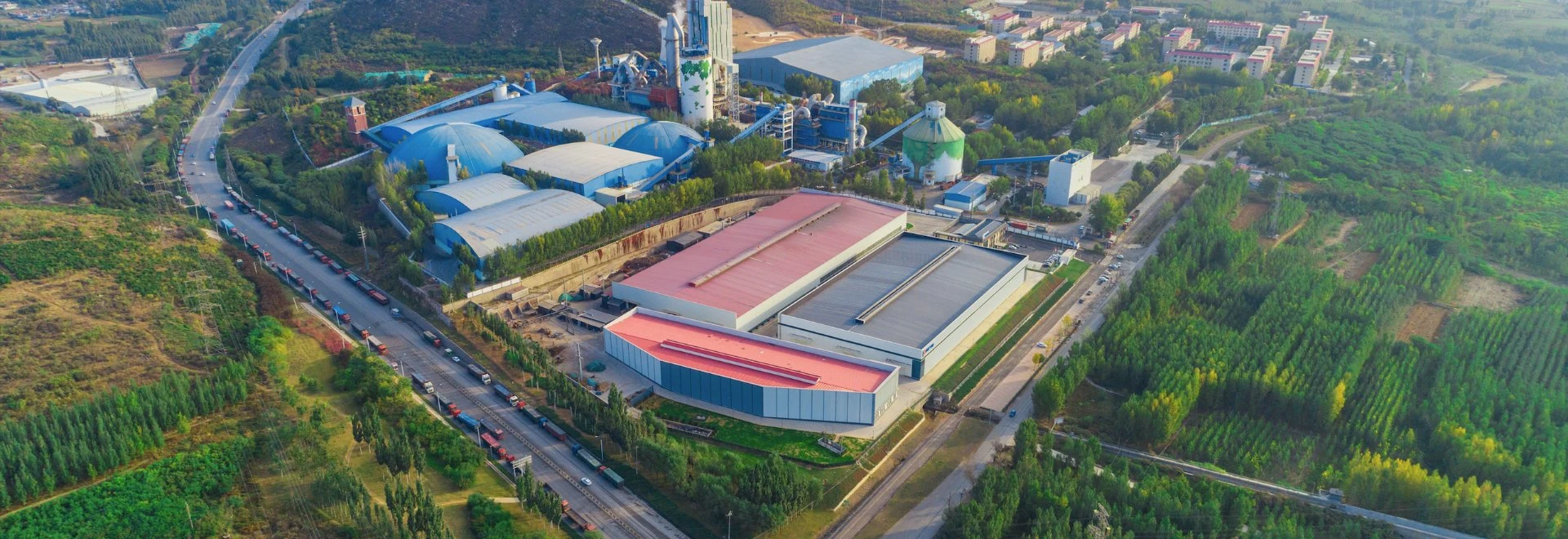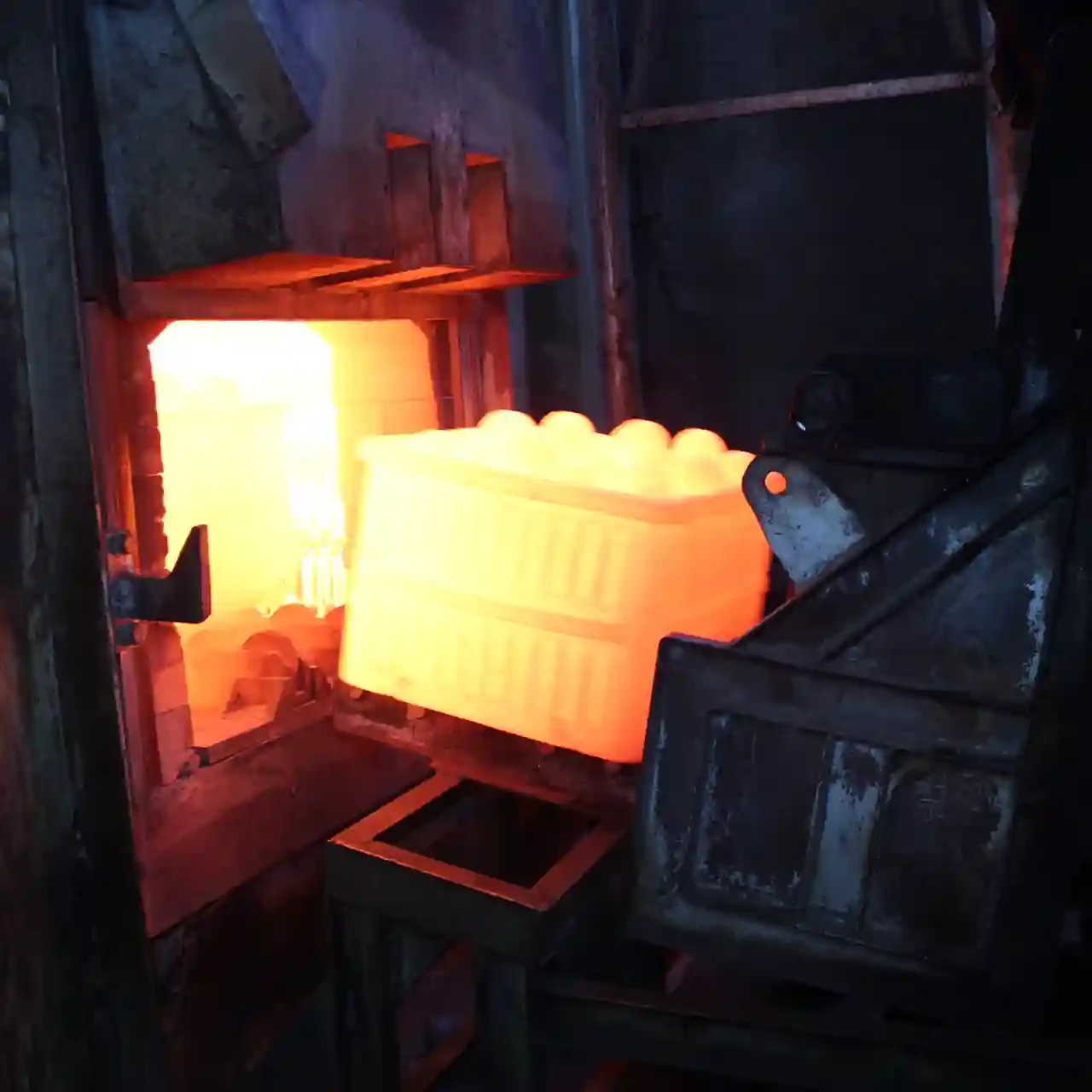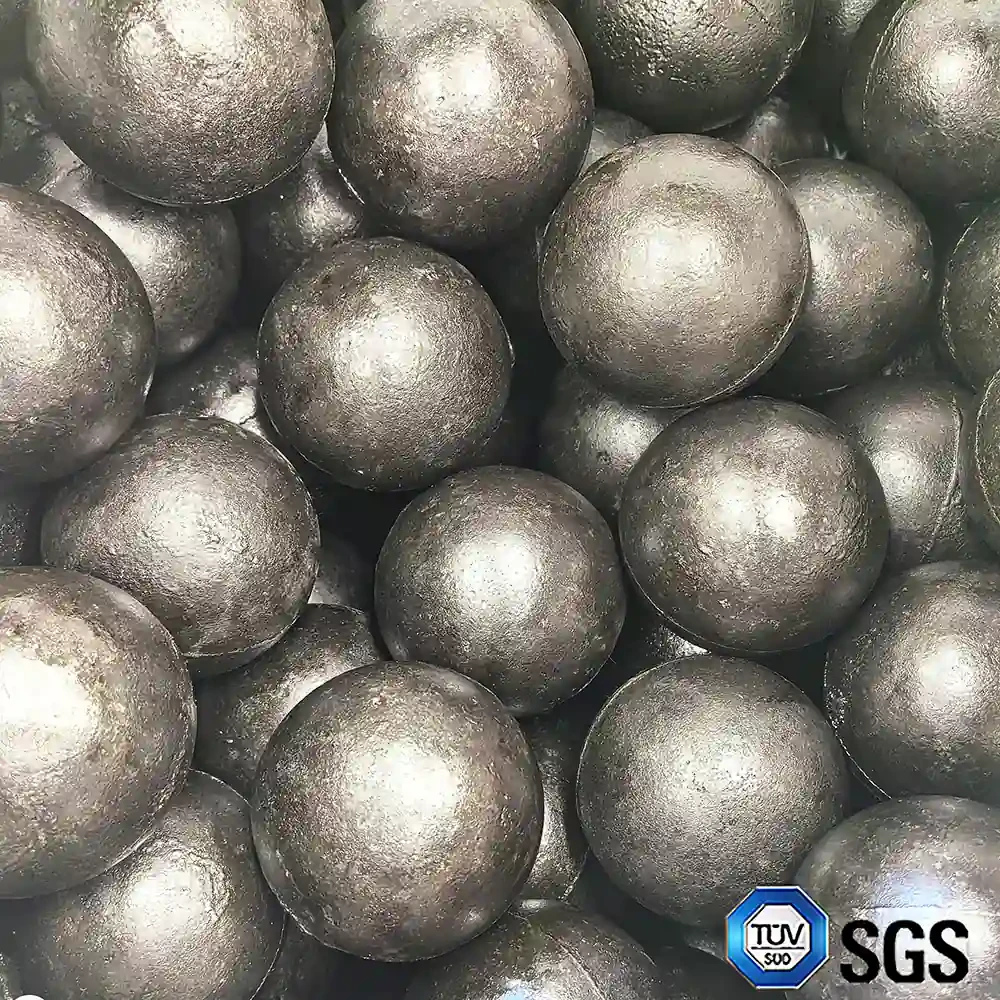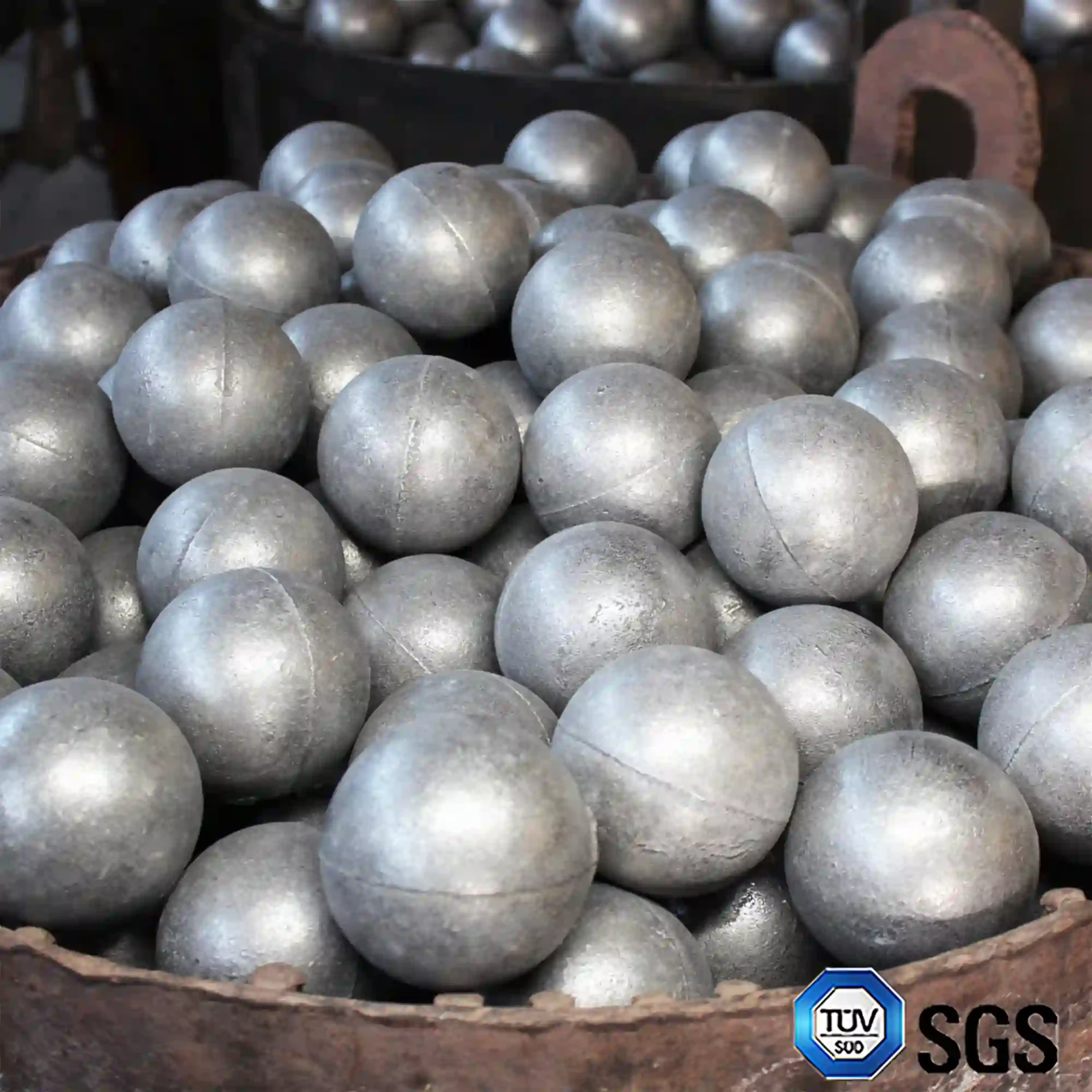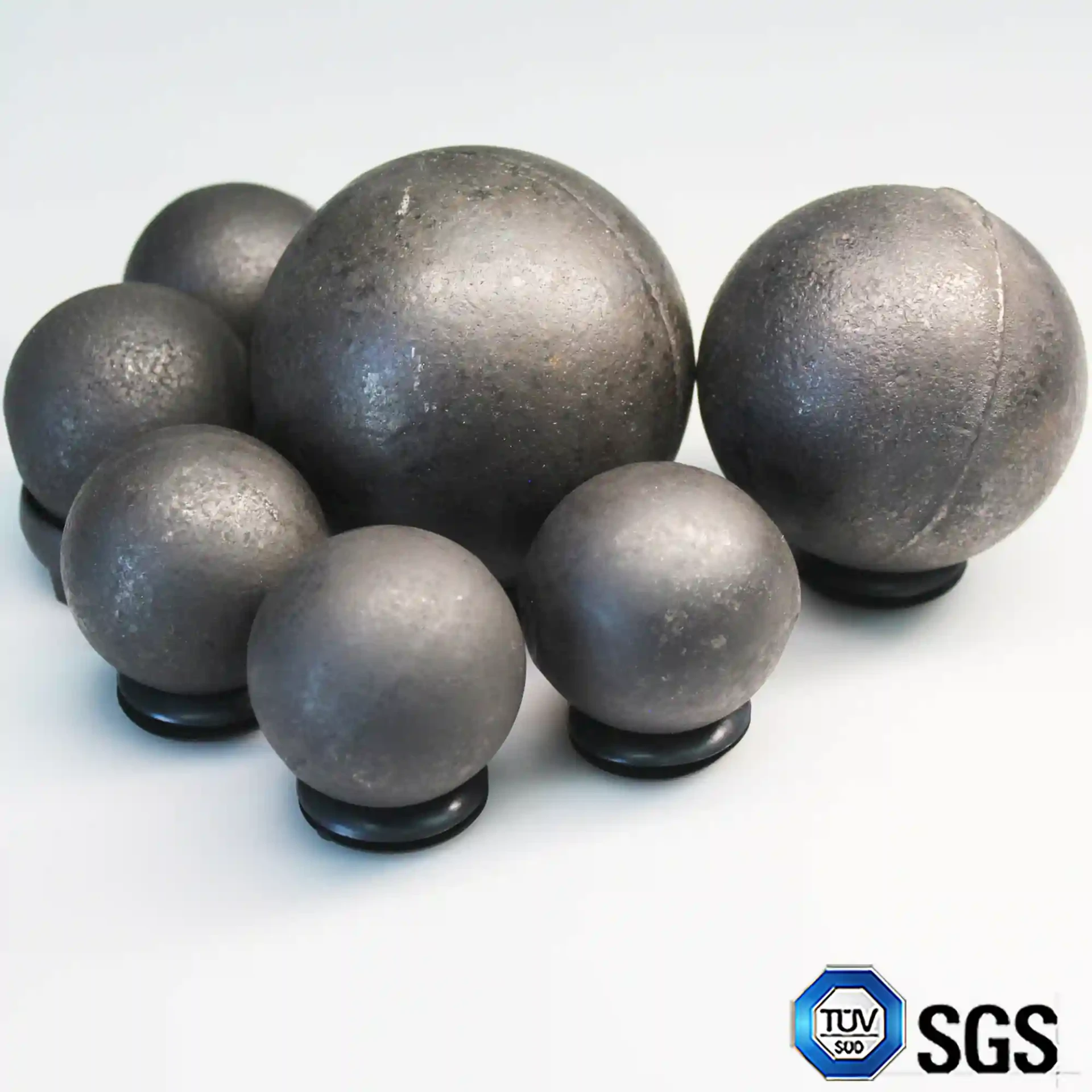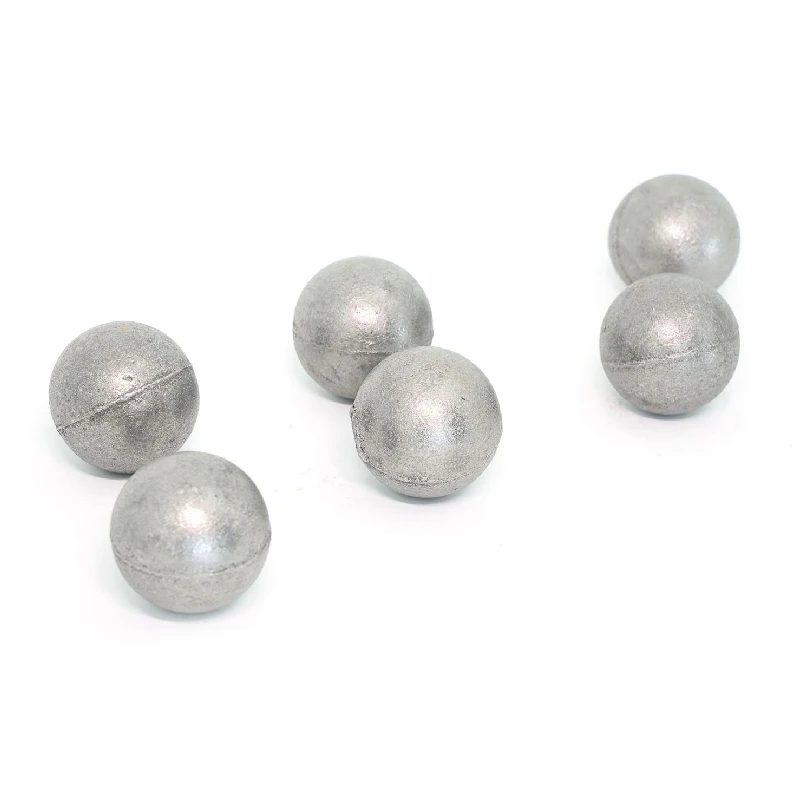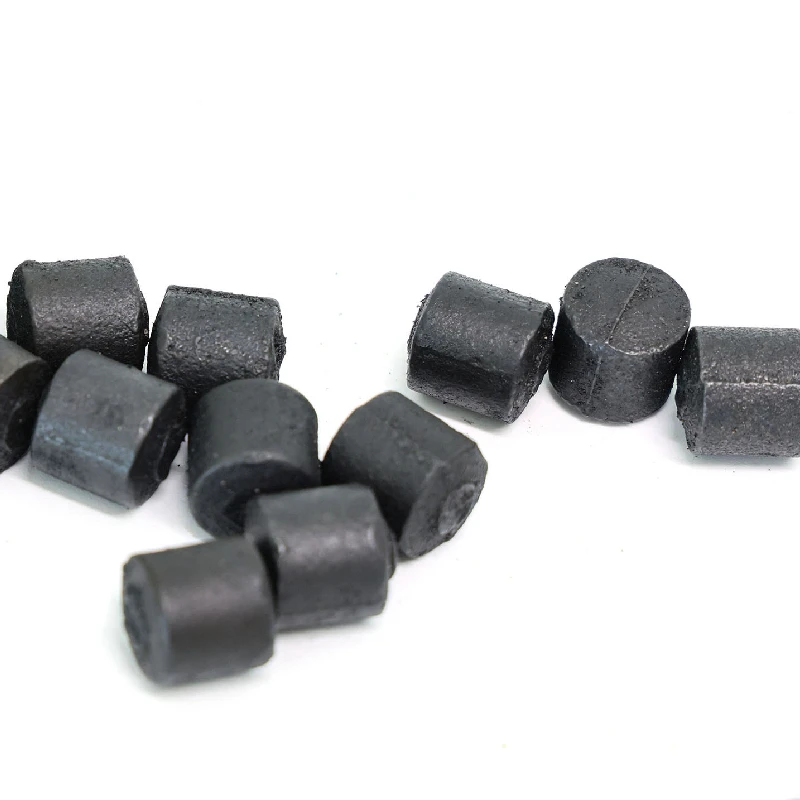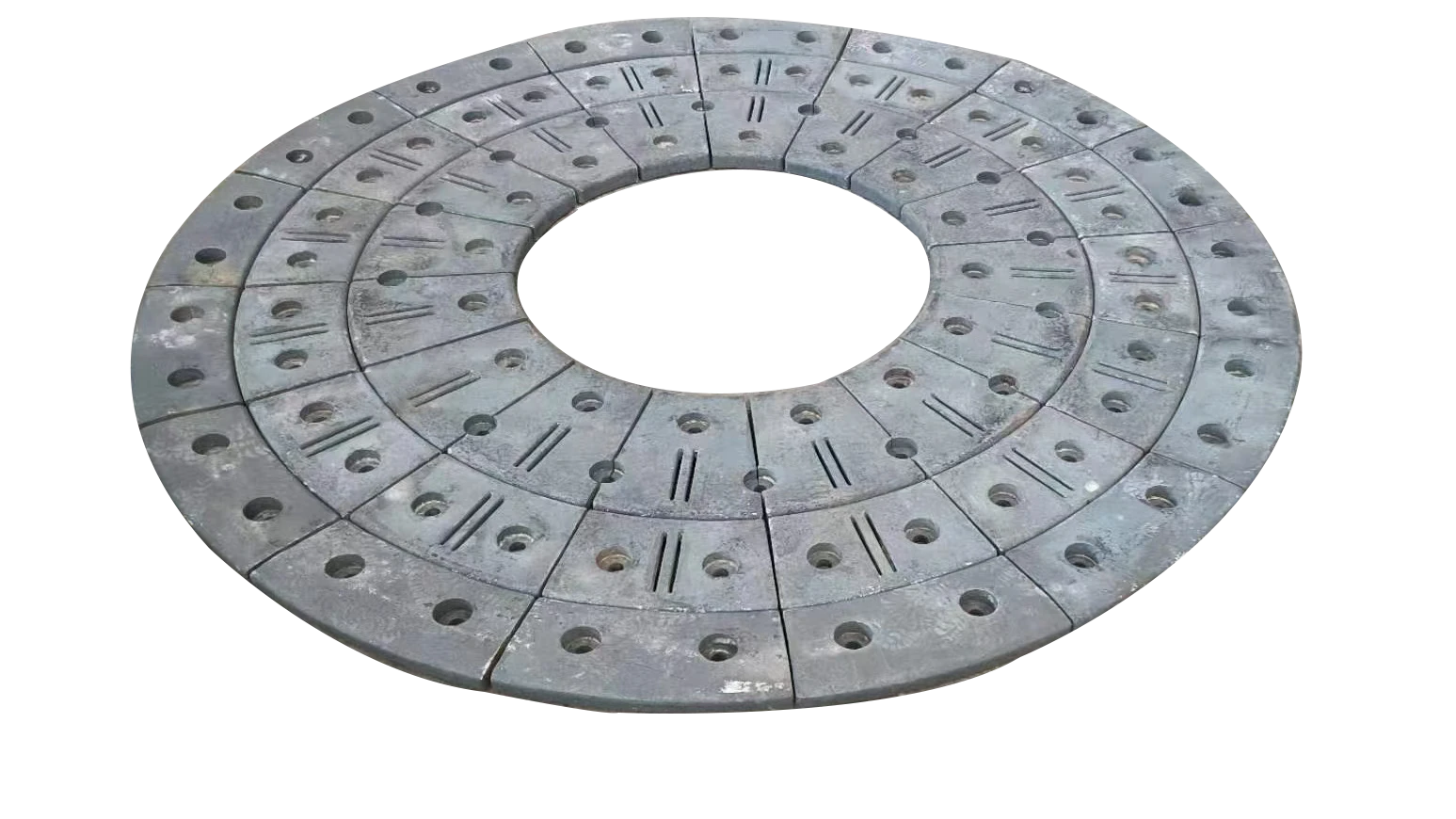Aug . 21, 2025 20:40 Back to list
Premium Chromium Manganese Alloys for Steel & Foundry
The Strategic Importance of Chromium Manganese in Modern Metallurgy
In the intricate landscape of modern industrial materials, the role of specialized ferroalloys is paramount. Among these, chromium manganese stands out as a critical component, indispensable for enhancing the properties of various steels and alloys. This versatile ferroalloy, often produced through sophisticated pyrometallurgical processes, contributes significantly to improving material strength, hardness, wear resistance, and corrosion resilience. Its applications span across a multitude of heavy industries, from the foundational steel and metallurgy sectors to advanced engineering and manufacturing disciplines.
The unique synergistic relationship between chromium and manganese within an alloy matrix provides distinct advantages, making it a preferred choice over individual alloying elements for specific performance requirements. Manganese, a vital element in steel production, acts as a deoxidizer and desulfurizer, while also improving hot workability and tensile strength. Chromium, on the other hand, is renowned for imparting corrosion resistance, hardenability, and high-temperature strength. The controlled combination of these elements in various forms, including ferro silico manganese, ferro silicon manganese, and ferrosilicon manganese, allows for the precise tailoring of material properties to meet the stringent demands of contemporary industrial applications. This article delves into the comprehensive aspects of chromium manganese, exploring its market trends, technical specifications, manufacturing intricacies, diverse applications, and the tangible benefits it delivers to B2B stakeholders seeking robust and reliable material solutions.
Understanding the nuanced characteristics and strategic deployment of chromium manganese is crucial for engineers, procurement specialists, and R&D teams aiming to optimize material performance and enhance operational longevity. We will also touch upon the broader category of manganese ferroalloy and its close relative, manganese metal, to provide a holistic perspective on these essential metallurgical components.

Global Industry Trends and Market Dynamics of Chromium Manganese
The market for chromium manganese is intrinsically linked to the global steel industry, which remains the primary consumer of ferroalloys. Recent market analyses indicate a steady growth trajectory for manganese ferroalloy due to increasing demand for high-strength, lightweight, and corrosion-resistant steels across various sectors. The burgeoning infrastructure development, particularly in emerging economies, coupled with a robust automotive sector striving for fuel efficiency and enhanced safety, continues to drive the demand for advanced steel grades, thereby boosting the consumption of chromium manganese.
Key trends observed in the chromium manganese market include a shift towards more sustainable and energy-efficient production methods. Manufacturers are increasingly adopting advanced furnace technologies and optimizing raw material utilization to reduce their carbon footprint and operational costs. Furthermore, the emphasis on circular economy principles is leading to greater recycling of steel scrap, which, in turn, influences the demand for virgin ferroalloys. The fluctuating prices of raw materials, particularly manganese ore and chrome ore, and energy costs are significant determinants of market dynamics, necessitating agile supply chain management and strategic procurement.
Geographically, Asia-Pacific, led by China and India, dominates the chromium manganese market due to its immense steel production capacity and rapid industrialization. Europe and North America also represent significant markets, driven by specialized steel production for aerospace, defense, and high-performance engineering applications. Innovation in alloy development, focusing on tailor-made compositions for specific industrial challenges, is another prominent trend. For instance, the development of ultra-high strength steels for automotive lightweighting or specialized alloys for extreme temperature environments relies heavily on precise alloying with elements like chromium and manganese.
Moreover, the increasing adoption of advanced manufacturing processes such as additive manufacturing (3D printing) for metallic components requires new generations of metal powders, where chromium manganese and its derivatives play a role in formulating high-performance alloys. The global push for renewable energy infrastructure, including wind turbines and solar panel frameworks, also contributes to the demand for durable steel structures, directly impacting the chromium manganese sector. As industries continue to evolve, the demand for high-performance materials will only intensify, solidifying the critical role of these essential ferroalloys.

Technical Parameters and Specifications of Chromium Manganese Alloys
The efficacy of chromium manganese as an alloying agent is defined by its precise chemical composition and the resulting physical and mechanical properties it imparts to the base metal. Understanding these technical parameters is crucial for material engineers and metallurgists in selecting the appropriate grade for specific applications. Different grades of ferro silico manganese or ferrosilicon manganese, for example, vary significantly in their silicon content, which influences deoxidation capabilities and fluidity during casting.
Typical Chemical Composition Ranges (by weight %)
| Element | Standard Grade (e.g., FeCrMn) | High Purity / Specialized Grade |
|---|---|---|
| Chromium (Cr) | 15-30% | 20-40% |
| Manganese (Mn) | 50-70% | 45-65% |
| Silicon (Si) | 0.5-2.0% | 0.1-1.0% (Lower for purity) |
| Carbon (C) | 0.1-0.5% | <0.05% (Ultra-low carbon) |
| Phosphorus (P) | <0.05% | <0.02% |
| Sulfur (S) | <0.05% | <0.02% |
| Iron (Fe) | Balance | Balance |
Key Physical Properties
- Density: Typically ranges from 6.8 to 7.8 g/cm³, depending on the specific composition. This influences the amount required for a given volume in steelmaking.
- Melting Point: Varies significantly based on the exact alloy composition, usually between 1200°C and 1500°C. This property is crucial for its efficient dissolution in molten steel.
- Form: Available in various forms such as lumps, crushed granules, or powders, tailored for different charging methods in furnaces.
Impact on Mechanical Properties of Steel
The addition of chromium manganese significantly influences the mechanical properties of the resulting steel:
- Hardness: Chromium contributes to the formation of carbides, increasing the hardness and wear resistance of steel. Manganese aids in solid solution strengthening and enhances the hardenability.
- Tensile Strength & Yield Strength: Both elements, particularly manganese, improve the overall strength and toughness of steel, allowing it to withstand higher stresses before deformation or fracture.
- Impact Toughness: Manganese, when correctly balanced, can enhance the steel's resistance to brittle fracture under impact loading, a critical property for many structural and machinery components.
- Corrosion Resistance: Chromium is the primary element responsible for forming a passive oxide layer, offering excellent resistance to oxidation and various forms of corrosion, which is crucial in applications like petrochemical and marine environments.
Manufacturers adhere to strict international standards such as ISO, ASTM, and EN for the production and testing of chromium manganese to ensure consistent quality and performance. These standards specify permissible impurity levels, particle size distribution, and chemical composition, thereby guaranteeing that the product meets the stringent requirements of high-performance steel applications.

The Meticulous Manufacturing Process of Chromium Manganese Alloys
The production of chromium manganese ferroalloys is a complex metallurgical process, primarily conducted in submerged arc furnaces (SAF). This process ensures the precise control of chemical composition and the elimination of impurities, yielding a high-quality product essential for demanding industrial applications. The detailed manufacturing steps are critical for achieving the desired material properties and performance consistency.
Raw Material Preparation
The process begins with the careful selection and preparation of raw materials. High-grade manganese ore, chrome ore, reductants (such as coke, coal, or charcoal), and fluxing agents (like limestone or quartz) are meticulously crushed, screened, and blended in specific proportions. The quality and purity of these raw materials directly impact the final product's composition and performance. Pre-treatment like calcination or drying may be applied to optimize the furnace charge.
Smelting in Submerged Arc Furnaces (SAF)
The blended raw materials are continuously fed into a large, refractory-lined submerged arc furnace. High-current electrodes submerged in the charge generate intense heat through resistance, melting the burden. The manganese and chromium oxides are reduced by carbon, forming molten manganese ferroalloy, which includes chromium manganese. This pyrometallurgical reduction process is carefully controlled, often using sophisticated process control systems, to maintain optimal temperature profiles and ensure efficient reduction reactions. The molten alloy, being denser, collects at the bottom of the furnace, while the slag (molten impurities) floats on top.
Tapping and Casting
Once a sufficient quantity of molten alloy accumulates, it is "tapped" from the furnace into ladles. From the ladles, the molten chromium manganese is then cast into molds, typically large ingots or pigs. The cooling process is managed to ensure desired microstructure and minimal internal stresses. Some producers may opt for continuous casting methods for improved efficiency and consistent product form.
Crushing, Sizing, and Packaging
After solidification, the ingots are cooled, broken up, and then undergo further processing, including crushing and screening, to achieve specific size fractions required by customers. This might range from large lumps for steel mills to finer granules or even powders for specialized applications. Packaging typically involves robust bags, drums, or bulk container111s to prevent contamination and ensure safe transport.
Quality Control and Inspection Standards
Throughout the entire manufacturing process, stringent quality control measures are implemented. This includes:
- Raw Material Analysis: Incoming raw materials are tested for chemical composition and impurities.
- In-Process Monitoring: Real-time monitoring of furnace parameters, temperature, and off-gas analysis.
- Product Analysis: Samples from each tapped batch are subjected to comprehensive chemical analysis using techniques like X-ray fluorescence (XRF) and optical emission spectrometry (OES) to verify compliance with specifications.
- Physical Inspection: Visual inspection for physical defects, sizing analysis, and density checks.
- Adherence to Standards: Products are manufactured and tested in accordance with international standards such as ISO 9001 (Quality Management System), ISO 14001 (Environmental Management System), and specific material standards like ASTM A483 for Ferroalloys or relevant European (EN) and Japanese (JIS) standards. This rigorous adherence ensures the product's reliability and consistent performance, thereby enhancing the operational longevity and efficiency of the downstream products like high-manganese steel grate plates.
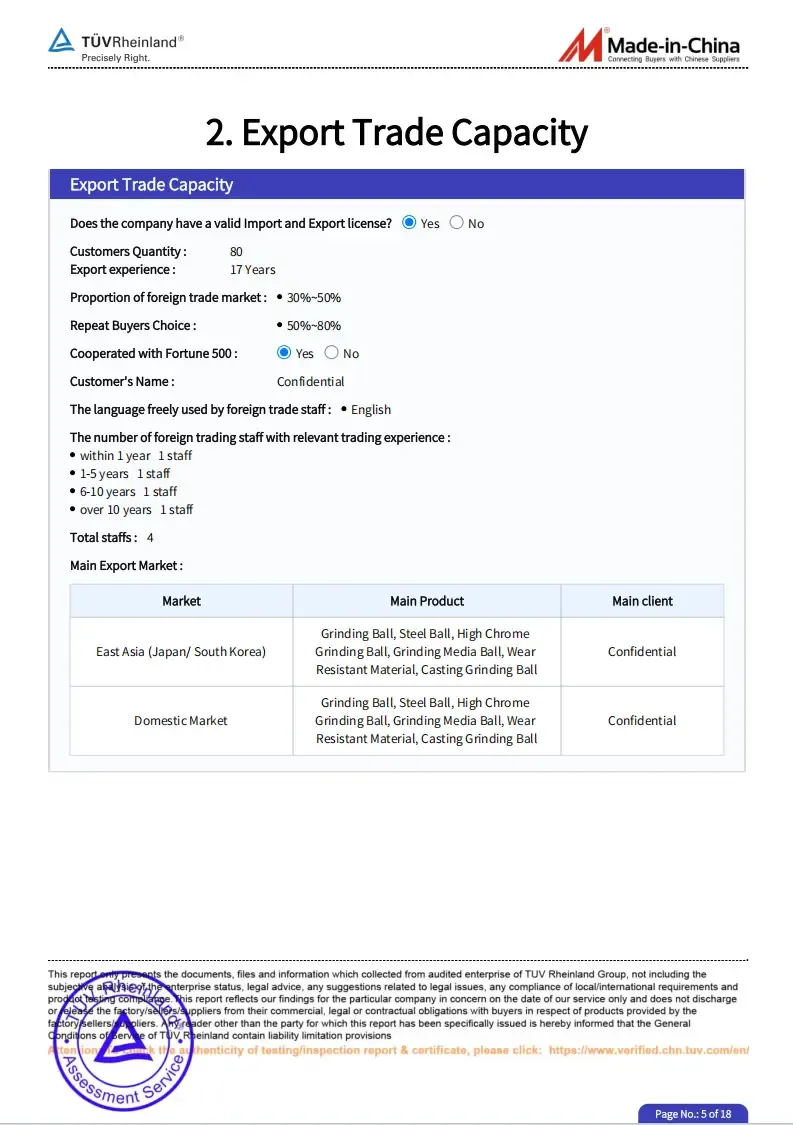
Diverse Applications and Key Use Cases of Chromium Manganese Alloys
The versatility of chromium manganese as an alloying agent underpins its widespread adoption across a myriad of industrial sectors. Its ability to impart crucial properties such as enhanced strength, exceptional wear resistance, and superior corrosion resistance makes it invaluable for demanding operational environments. The primary application of chromium manganese lies within the steel and foundry industries, where it is utilized to produce a diverse range of high-performance steels.
Steelmaking and Foundry Industry
- High Manganese Steels: Crucial for producing Hadfield steels (manganese steels, typically 11-14% Mn) which exhibit exceptional work-hardening capabilities and high abrasion resistance. These steels are indispensable for components subjected to severe impact and wear, such as crusher jaws, railway points, and high-manganese steel grate plates used in mining and cement industries.
- Stainless Steels: Chromium is a primary constituent of stainless steels, providing corrosion resistance. The addition of manganese, often in the form of ferro silico manganese, improves the hot workability and tensile strength of austenitic stainless steels (e.g., 200 series stainless steels), often partially substituting nickel, offering a more cost-effective alternative while maintaining desirable properties.
- Tool Steels: For high-speed and hot-work tool steels, chromium manganese enhances hardenability, wear resistance, and toughness, crucial for tools subjected to high stresses and temperatures.
- Low-Alloy Steels: In structural and engineering low-alloy steels, it improves strength, toughness, and weldability, making them suitable for construction, automotive chassis, and pipeline applications.
Key Applicable Industries
- Mining & Quarrying: Components like crusher linings, shovel teeth, and screen plates made from high-manganese steels benefit immensely from the wear resistance imparted by chromium manganese. This significantly extends equipment lifespan, reducing maintenance downtime and operational costs.
- Cement & Aggregate: Grinding media, clinker cooler parts, and mill liners require materials that can withstand severe abrasion and impact. Chromium manganese-alloyed steels provide the necessary durability, contributing to energy efficiency by maintaining optimal grinding performance.
- Metallurgy & Steel Production: Beyond its role as an alloying agent, chromium manganese (or derivatives like ferrosilicon manganese) is used for deoxidation and desulfurization during steel refining, ensuring the final product's purity and mechanical integrity.
- Petrochemical & Chemical Processing: In these industries, corrosion resistance is paramount. Stainless steels alloyed with chromium manganese are utilized for piping, tanks, and pressure vessels, ensuring safety and integrity against aggressive chemical environments. This leads to reduced leakage risks and improved operational safety.
- Water Supply & Drainage: Components such as pump impellers, valves, and pipeline fittings in water treatment plants and distribution networks benefit from the corrosion resistance and strength provided by chromium manganese-alloyed materials, ensuring long-term operational reliability and minimal leakage.
- Railway & Transportation: For railway tracks, wheel sets, and tram components, where high wear resistance and impact strength are crucial for safety and longevity, chromium manganese steels are a standard choice.
- Welding Electrodes: Chromium manganese is also used in the coating of welding electrodes, where it contributes to the weld metal's strength, toughness, and crack resistance, particularly for high-strength steel applications.
The strategic use of chromium manganese alloys in these scenarios translates directly into tangible benefits for industrial clients: extended equipment lifespan, reduced maintenance frequency, improved operational efficiency, and ultimately, significant cost savings over the total cost of ownership. Its ability to enhance both mechanical strength and environmental resistance makes it an indispensable component in engineering robust and sustainable industrial solutions.
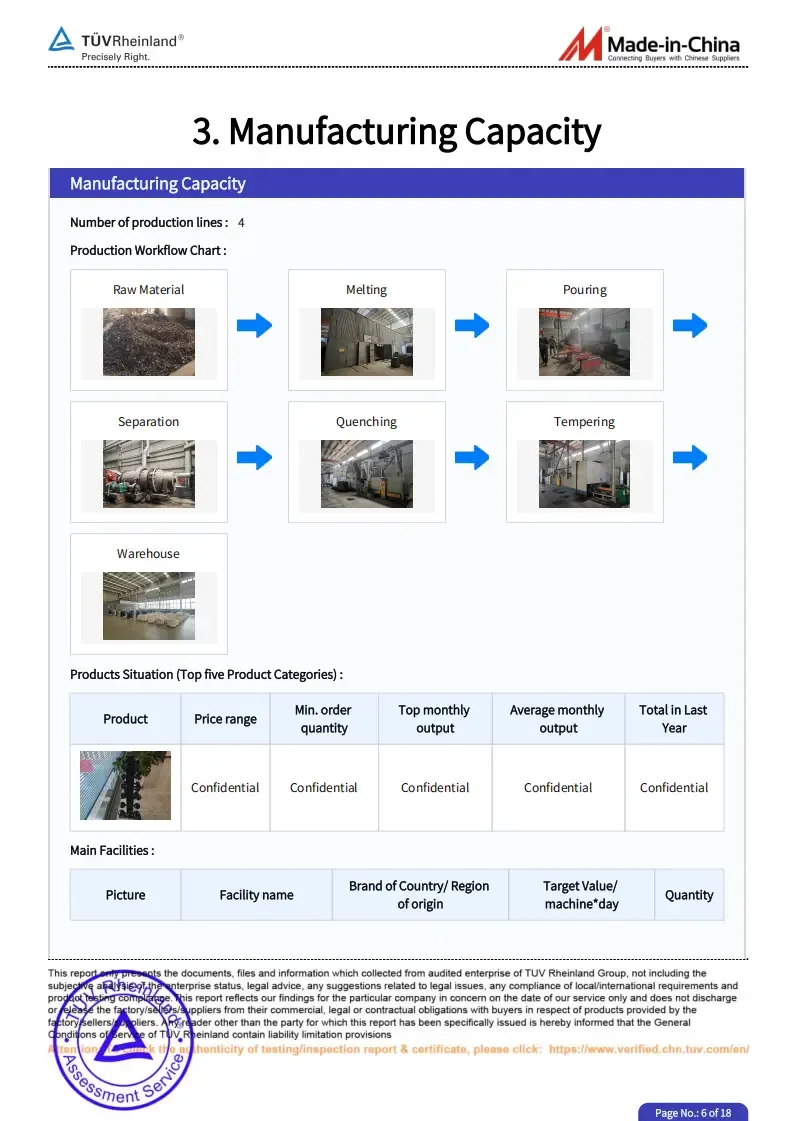
Technical Advantages and Performance Benefits of Chromium Manganese
The synergistic properties of chromium and manganese, when alloyed together, offer a compelling array of technical advantages that translate into significant performance benefits for various industrial applications. These advantages often surpass those of materials alloyed with individual elements, providing a superior solution for demanding environments.
Superior Wear Resistance
One of the most notable benefits of chromium manganese-alloyed steels is their exceptional wear resistance. Manganese promotes work hardening, meaning the material becomes harder and more resistant to abrasion when subjected to impact or rubbing. Chromium, through the formation of hard carbides, further enhances this property. This combination is crucial for components in abrasive environments such as mining machinery, cement mills, and aggregate processing equipment. For example, a high-manganese steel grate plate in a crushing plant can last significantly longer than conventional steel plates, reducing the frequency of costly replacements and associated downtime.
Enhanced Strength and Toughness
Both chromium and manganese contribute to the strength and toughness of steel. Manganese acts as a powerful solid solution strengthener and, when combined with proper heat treatment, enhances the steel's hardenability, allowing for the formation of stronger microstructures like martensite. Chromium further reinforces this by promoting fine grain structures and improving the overall tensile and yield strength without compromising ductility. This combination results in materials that can withstand high operational stresses and absorb significant impact energy without fracturing, crucial for heavy-duty machinery and structural components.
Excellent Corrosion Resistance
Chromium is well-known for its ability to form a passive oxide layer on the surface of steel, providing robust protection against oxidation and various forms of corrosion, including pitting and crevice corrosion. While manganese itself is not a primary corrosion resistor, its presence can influence the stability of the passive layer and improve the overall microstructure, indirectly supporting corrosion resistance in certain stainless steel grades (e.g., 200 series). This property is vital for components exposed to aggressive chemicals, saltwater, or high humidity, such as those found in petrochemical plants, marine environments, and water treatment facilities.
Improved Hot Workability and Weldability
Manganese plays a crucial role in improving the hot workability of steel by reacting with sulfur to form manganese sulfides, which are less harmful than iron sulfides at high temperatures, thereby preventing hot shortness. This makes the steel easier to process through forging, rolling, and other hot forming operations. Furthermore, the appropriate levels of manganese ferroalloy can enhance the weldability of steel, reducing the likelihood of cracking in the heat-affected zone and ensuring stronger, more reliable welded joints.
Cost-Effectiveness and Energy Efficiency
While the initial cost of chromium manganese-alloyed materials might be slightly higher than that of conventional steels, the long-term benefits in terms of extended lifespan, reduced maintenance, and fewer replacements lead to significant cost savings. The enhanced durability of components translates into reduced operational downtime, improving overall productivity. Moreover, by reducing material degradation and ensuring efficient operation of machinery, these alloys contribute to energy saving by minimizing frictional losses and maintaining optimal system performance over longer periods.
In summary, the technical advantages of using chromium manganese as an alloying agent are multifaceted, providing a robust solution for industries that demand materials with superior wear, strength, and corrosion resistance. These benefits directly contribute to enhanced operational efficiency, reduced total cost of ownership, and improved safety standards across diverse applications.
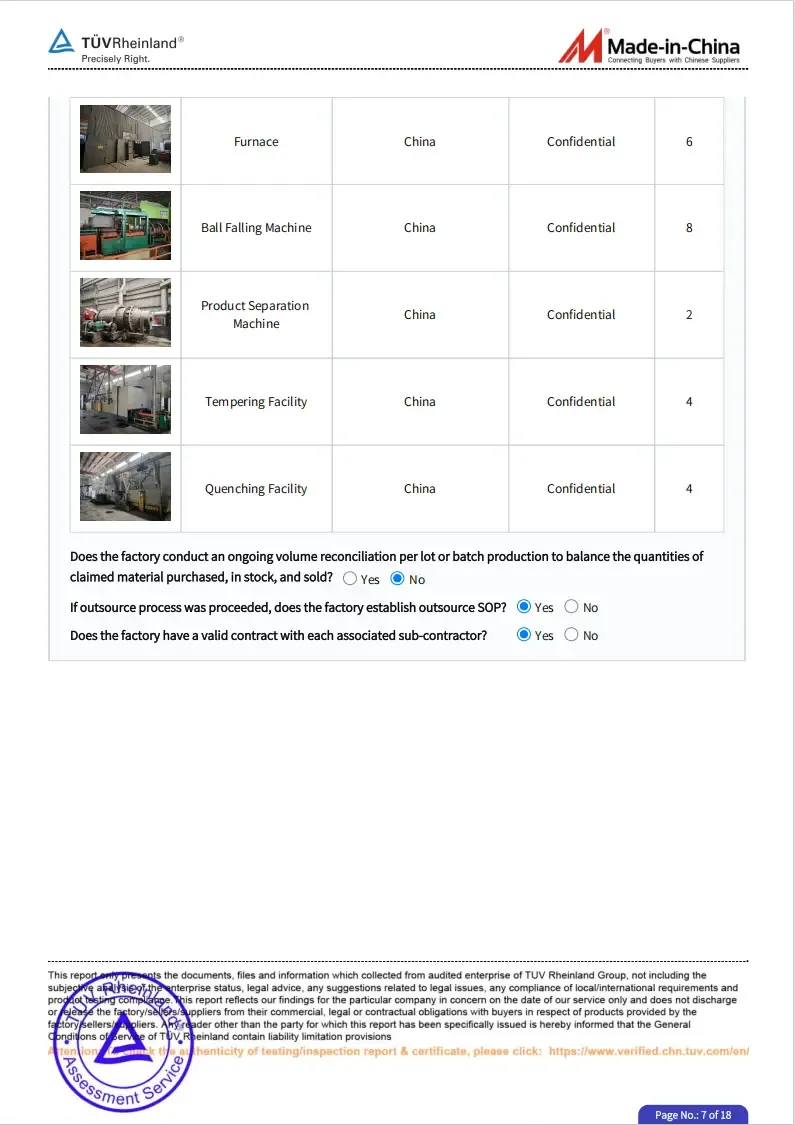
Manufacturer Comparison and Tailored Chromium Manganese Solutions
Selecting the right supplier for chromium manganese and related ferroalloys is a critical decision that impacts product quality, supply chain reliability, and ultimately, operational efficiency. While many manufacturers exist in the global market, distinguishing between them based on key criteria is essential for B2B procurement and technical teams. A reputable supplier will not only provide high-quality products but also offer comprehensive support and customization capabilities.
Key Criteria for Supplier Evaluation
- Product Quality and Consistency: The ability to consistently deliver chromium manganese with precise chemical compositions and minimal impurities is paramount. Look for suppliers with robust quality management systems (e.g., ISO 9001 certified) and advanced analytical laboratories. Batch-to-batch consistency is crucial for predictable metallurgical outcomes.
- R&D and Innovation Capabilities: Leading manufacturers invest in research and development to optimize production processes, improve alloy performance, and develop new grades like specialized ferro silico manganese or ferrosilicon manganese. This indicates a commitment to staying ahead of industry demands and offering cutting-edge solutions.
- Supply Chain Reliability and Logistics: A strong global supply chain network, efficient logistics, and transparent communication regarding lead times and delivery schedules are vital. Disruptions in ferroalloy supply can significantly impact steel production schedules.
- Technical Support and Expertise: Beyond just selling product, a valuable supplier offers technical consultation, helping clients choose the most suitable chromium manganese grade for their specific application and assisting with optimization. This deep industry expertise is invaluable.
- Environmental and Social Governance (ESG): Increasingly, clients are scrutinizing suppliers' environmental footprint, labor practices, and ethical sourcing. Manufacturers committed to sustainability and responsible practices align better with modern corporate values.
- Certifications and Authoritative Endorsements: Beyond ISO 9001, look for adherence to industry-specific certifications, participation in industry associations, and positive client testimonials or case studies demonstrating reliable performance. The Company qualification certification can serve as a testament to their established processes and credibility.
The Value of Customization and Tailored Solutions
While standard grades of chromium manganese, manganese ferroalloy, or manganese metal fulfill many requirements, complex industrial applications often demand tailored solutions. Reputable manufacturers offer customization services that include:
- Custom Chemical Compositions: Adjusting the precise percentage of chromium, manganese, silicon, carbon, and other trace elements to achieve specific metallurgical properties for a unique steel grade or casting application.
- Particle Size and Form: Supplying chromium manganese in various forms (lumps, granules, powders) and specific particle size distributions to optimize dissolution rates and handling for different furnace types or processes.
- Special Packaging: Custom packaging solutions to meet specific handling, storage, or environmental requirements, ensuring product integrity from dispatch to delivery.
- Technical Advisory Services: Collaborative R&D with clients to develop entirely new alloy compositions or optimize existing ones for enhanced performance or cost efficiency. This might involve metallurgical simulations or pilot plant trials.
Engaging with a manufacturer capable of providing these tailored solutions ensures that clients receive not just a product, but a strategic material partnership that directly contributes to their competitive advantage and operational excellence. For instance, optimizing the chromium manganese content in high-manganese steel for a specific type of grinding mill can lead to unprecedented improvements in wear life and throughput.
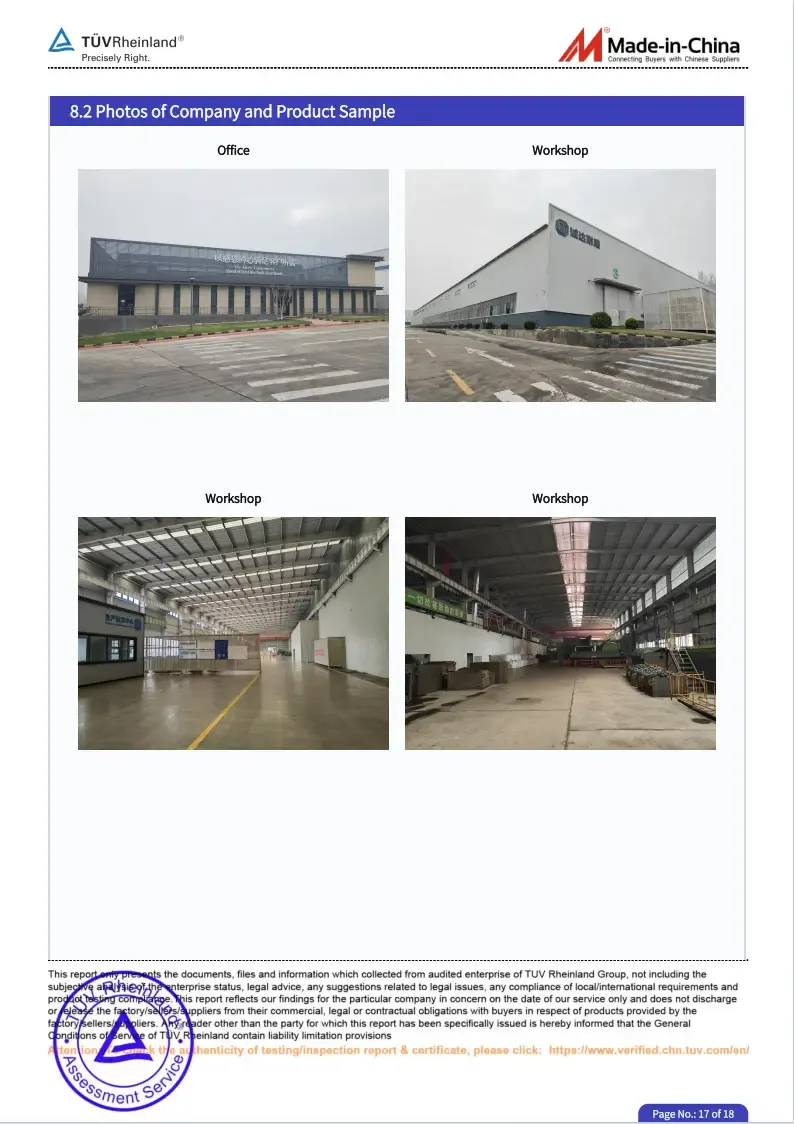
Case Studies and Success Stories: Chromium Manganese in Action
Real-world applications best illustrate the profound impact of chromium manganese in various industries. These case studies highlight how its unique properties lead to tangible operational improvements and significant cost savings for businesses.
Case Study 1: Extending Lifespan of Grate Plates in Mining Operations
A large iron ore mining company faced persistent issues with premature wear of their grate plates in primary crushers. Standard manganese steel plates required replacement every 3-4 months, leading to significant downtime and maintenance costs. By transitioning to high-manganese steel grate plates specifically alloyed with optimized chromium manganese content, the lifespan of these critical components increased to over 9 months. This improvement resulted in a 55% reduction in annual grate plate replacement costs and a 60% decrease in associated maintenance hours, directly translating to enhanced operational uptime and increased ore processing capacity.
Case Study 2: Enhancing Corrosion Resistance in Petrochemical Pumps
A major petrochemical facility was experiencing frequent failures of pump impellers and casings due to aggressive chemical environments, resulting in costly leaks and safety hazards. By utilizing specialized stainless steel grades with increased chromium manganese content, the facility observed a dramatic improvement in corrosion resistance. The new components exhibited minimal degradation even after two years of continuous operation, whereas previous materials showed significant pitting and stress corrosion cracking within six months. This led to a 70% reduction in pump maintenance events and ensured safer, more reliable chemical transfer operations.
Case Study 3: Improving Efficiency of Cement Mill Liners
A leading cement manufacturer sought to improve the grinding efficiency and reduce energy consumption in their ball mills. The existing mill liners, made from conventional steel, suffered from rapid wear, leading to reduced grinding efficiency and increased power consumption over time. After consulting with a ferroalloy expert, they implemented mill liners made from an optimized chromium manganese cast iron, specifically engineered for high abrasion and impact. The new liners not only demonstrated a 40% longer service life but also maintained a more consistent grinding surface, resulting in a 3% reduction in specific energy consumption (kWh/ton of cement produced) and a 15% increase in grinding throughput. This highlights the energy saving potential of properly engineered alloys.
Case Study 4: Developing High-Strength Welds for Bridge Construction
In a large-scale infrastructure project involving high-strength steel bridge construction, consistent weld quality was paramount. The project engineers collaborated with a specialized welding electrode manufacturer to develop electrodes specifically formulated with controlled additions of ferro silicon manganese. This ensured superior deoxidation and desulfurization during welding, leading to welds with significantly improved tensile strength and impact toughness. Post-weld inspection showed a 25% reduction in defect rates (e.g., porosity and cracking), accelerating construction timelines and ensuring the long-term structural integrity and safety of the bridge.
These examples underscore the critical role of high-quality chromium manganese alloys in enhancing the performance, durability, and cost-effectiveness of industrial components. They demonstrate a clear return on investment through reduced maintenance, extended operational life, and improved overall productivity for businesses. Partnering with a knowledgeable supplier who can provide customized manganese ferroalloy solutions is key to unlocking these benefits.

Quality Assurance, Certifications, and Trustworthiness in Chromium Manganese Supply
For B2B buyers of chromium manganese and other ferroalloys, trust is built on a foundation of consistent quality, transparent processes, and unwavering commitment to customer satisfaction. A reliable supplier goes beyond merely providing products; they offer assurance through rigorous quality control, adherence to international standards, and robust customer support infrastructure. This commitment is often reflected in their certifications and established industry reputation.
Comprehensive Quality Assurance Protocols
Leading manufacturers of chromium manganese implement multi-stage quality assurance protocols from raw material sourcing to final product delivery. This includes:
- Supplier Vetting: Rigorous evaluation of raw material suppliers (manganese ore, chrome ore, reductants) to ensure consistent quality and ethical sourcing.
- In-Process Testing: Real-time monitoring and analysis during the smelting process to maintain precise temperature and chemical composition. This involves frequent sampling and instrumental analysis (e.g., OES, XRF) to make immediate adjustments.
- Post-Production Analysis: Every batch of finished chromium manganese is subjected to comprehensive laboratory testing to confirm its chemical composition, particle size distribution, and other physical properties against established specifications.
- Traceability: Maintaining a robust system for batch traceability, allowing for complete historical data on production parameters, raw materials, and test results for every shipment.
Adherence to International Certifications and Standards
A hallmark of a trustworthy supplier is their adherence to globally recognized certifications and industry standards. For a company involved in the supply of manganese ferroalloy, these may include:
- ISO 9001:2015: Certification for Quality Management Systems, ensuring consistent product and service quality that meets customer and regulatory requirements. This is a fundamental benchmark for reliability.
- ISO 14001:2015: Certification for Environmental Management Systems, demonstrating a commitment to minimizing environmental impact during production.
- OHSAS 18001 (or ISO 45001): For Occupational Health and Safety Management, ensuring safe working conditions within the production facilities.
- ASTM, EN, JIS Standards: Compliance with specific material standards relevant to ferroalloys, which define acceptable chemical compositions, physical forms, and testing methodologies.
- Company Qualification Certifications: Beyond generic standards, specific industry or national certifications (e.g., for certain types of high-manganese steel production or specialized applications) further attest to a supplier's niche expertise and proven capability. Such certifications, indicating a strong Company qualification certification, reinforce their authority and reliability in the field.
Reliable Delivery and Customer Support
Trust extends beyond product quality to the entire customer experience:
- Transparent Delivery Cycle: Clear communication regarding lead times, logistics, and delivery schedules from order placement to arrival at the client's facility.
- Robust Logistics Network: Ability to manage international shipments, customs clearance, and diverse transport methods (sea, rail, road) efficiently and reliably.
- Warranty and Quality Guarantee: A clear warranty policy on product specifications and performance, providing recourse in rare instances of non-compliance.
- Dedicated Customer Support: Responsive and knowledgeable technical and commercial support teams available to address queries, provide troubleshooting assistance, and offer expert advice on product application and optimization. This includes post-delivery follow-ups to ensure client satisfaction with the chromium manganese supplied.
By prioritizing suppliers who demonstrate these facets of quality assurance and trustworthiness, B2B clients can mitigate risks, ensure the consistent performance of their materials, and foster long-term, mutually beneficial partnerships. Such partnerships are fundamental to sustaining operations, driving innovation, and achieving competitive advantage in the global market.
Frequently Asked Questions (FAQ) about Chromium Manganese Alloys
Q1: What is chromium manganese, and how does it differ from other manganese ferroalloys?
A1: Chromium manganese is a complex ferroalloy containing both chromium and manganese, primarily used in steelmaking to impart specific properties. While manganese ferroalloys (like standard ferromanganese or manganese metal) focus on manganese's role as a deoxidizer, desulfurizer, and strength enhancer, chromium manganese uniquely combines these benefits with chromium's ability to provide corrosion resistance, hardenability, and high-temperature strength. This dual alloying approach creates materials with enhanced multi-functional performance, particularly in wear-resistant and corrosion-resistant applications. For instance, ferro silico manganese primarily focuses on manganese and silicon for deoxidation and improved fluidity, whereas chromium manganese specifically balances chromium and manganese.
Q2: What industries primarily benefit from using chromium manganese alloys?
A2: Industries that demand high-performance materials in abrasive, corrosive, or high-stress environments are the primary beneficiaries. These include:
- Mining and Quarrying: For wear-resistant components like crusher parts and high-manganese steel grate plates.
- Cement and Aggregate: For mill liners, grinding media, and clinker cooler parts.
- Petrochemical and Chemical Processing: For pipes, valves, and vessels requiring corrosion resistance.
- Steel and Foundry: For producing specialized stainless steels, tool steels, and high-strength low-alloy (HSLA) steels.
- Water Treatment and Drainage: For long-lasting, corrosion-resistant infrastructure components.
Q3: How does chromium manganese contribute to energy saving and reduced maintenance?
A3: By enhancing the wear resistance and overall durability of components, chromium manganese extends their operational lifespan significantly. This reduces the frequency of replacements and associated maintenance downtime, leading to substantial cost savings. Furthermore, in applications like grinding mills, highly wear-resistant liners maintain optimal grinding efficiency for longer periods, which directly translates into reduced energy consumption per unit of output.
Q4: What quality certifications should I look for in a chromium manganese supplier?
A4: Key certifications include ISO 9001 (Quality Management System) for overall quality consistency, and potentially ISO 14001 (Environmental Management) and ISO 45001 (Occupational Health & Safety). Compliance with international material standards such as ASTM, EN, and JIS is also crucial. A reputable supplier will also provide detailed technical data sheets and certificates of analysis for each batch, along with a strong Company qualification certification.
Q5: Can chromium manganese alloys be customized for specific applications?
A5: Absolutely. Leading manufacturers offer extensive customization options. This includes adjusting the precise chemical composition (e.g., varying Cr, Mn, Si, C content), tailoring the physical form (lumps, granules, powder) and particle size distribution, and developing unique packaging solutions. Customization ensures the chromium manganese alloy perfectly matches the client's specific metallurgical requirements and manufacturing processes, optimizing performance and cost-efficiency.
Q6: What is the typical delivery cycle for an order of chromium manganese?
A6: The delivery cycle can vary based on the order volume, specific customization requirements, and the supplier's logistics capabilities. Typically, for standard grades, lead times can range from 2 to 6 weeks. For customized orders or very large volumes, it might extend to 8-12 weeks, including production and international shipping. Reputable suppliers provide transparent delivery schedules and regular updates on order status.
Q7: What kind of after-sales support can I expect from a reliable supplier?
A7: A reliable supplier should offer comprehensive after-sales support, including technical assistance for product application and troubleshooting, metallurgical consultation, and a clear warranty policy on product quality and specifications. They should also have dedicated customer service representatives available to address any concerns or queries promptly, ensuring long-term customer satisfaction and successful product integration. This proactive support helps clients maximize the benefits from their chromium manganese purchase.
Conclusion: The Enduring Value of Chromium Manganese in Industrial Progress
The trajectory of industrial advancement is inextricably linked to the evolution of materials, and in this critical domain, chromium manganese stands as a testament to metallurgical innovation. As a foundational ferroalloy, its strategic importance in enhancing the performance characteristics of steels cannot be overstated. From imparting superior wear and impact resistance to ensuring robust corrosion protection and facilitating intricate manufacturing processes, the multifaceted benefits of chromium manganese directly translate into operational efficiency, extended component lifespans, and significant long-term cost savings for diverse industries.
The global demand for high-strength, durable, and sustainable materials continues to grow, driven by advancements in infrastructure, automotive manufacturing, energy production, and various heavy industries. In this evolving landscape, the role of specialized alloying agents like ferro silico manganese, ferro silicon manganese, and the broader category of manganese ferroalloy remains indispensable. Chromium manganese, with its unique synergistic properties, is poised to continue its critical contribution to material science and engineering, enabling the creation of components that withstand the most extreme operational conditions.
For B2B decision-makers, engineers, and procurement specialists, understanding the technical nuances and strategic advantages of chromium manganese is paramount. Partnering with a reputable manufacturer that upholds stringent quality control, offers comprehensive technical support, and provides tailored solutions is key to unlocking the full potential of these essential materials. By investing in high-quality chromium manganese, industries can ensure the reliability, longevity, and optimal performance of their assets, paving the way for sustained growth and innovation in a competitive global market. As the quest for ever more resilient and efficient materials continues, chromium manganese will undoubtedly remain at the forefront of metallurgical solutions.
References
- F. R. de S. Guimarães, V. A. S. da Silva, A. H. C. P. de Andrade, & J. T. Guimarães. (2018). "Manganese in Steelmaking." IntechOpen.
- G. Themelis. (2017). "Principles of Extractive Metallurgy." Taylor & Francis.
- H. K. D. H. Bhadeshia. (2001). "Stainless Steels." Cambridge University.
- J. C. Lippold & D. J. Kotecki. (2005). "Welding Metallurgy and Weldability of Stainless Steels." Wiley-Interscience.
- J. G. Speight. (2006). "Lange's Handbook of Chemistry." McGraw-Hill.
- M. J. Schrama, G. R. E. C. Pijpers, & P. S. B. A. Thys. (2018). "Ferroalloys for Steelmaking: A Review of Production and Applications." Journal of Sustainable Metallurgy.
- R. W. Hertzberg, R. O. Ritchie, & J. M. Schijve. (2012). "Fatigue of Engineering Materials." Academic Press.
- S. H. S. Murthy. (2006). "Manufacturing Technology: Foundry, Forming and Welding." I. K. International Pvt Ltd.
- T. W. K. L. M. E. R. G. N. S. H. K. D. H. Bhadeshia & R. W. K. Cahn. (2006). "Physical Metallurgy." Elsevier.
- W. G. Davenport, M. J. King, and I. C. L. White. (2002). "Iron and Steelmaking: Principles and Practice." CRC Press.
-
Expert Insights on Fabrica de Molinos de Bolas: Industry Trends & Global Applications
NewsNov.24,2025
-
Expert Insights on Fabricantes de Bolas de Molienda de Acero: Global Applications & Trends
NewsNov.23,2025
-
Leading Fabricantes de Bolas de Molienda: Your Ultimate Guide to Grinding Balls
NewsNov.23,2025
-
Fabricante de Bolas de Molienda – Quality Grinding Balls for Efficient Industry
NewsNov.23,2025
-
Trusted Proveedores de Medios de Molienda for Efficient Industrial Grinding
NewsNov.22,2025
-
Proveedores de Bolas de Molienda: Your Guide to Top Grinding Ball Suppliers & Industry Insights
NewsNov.22,2025
Realted Products

